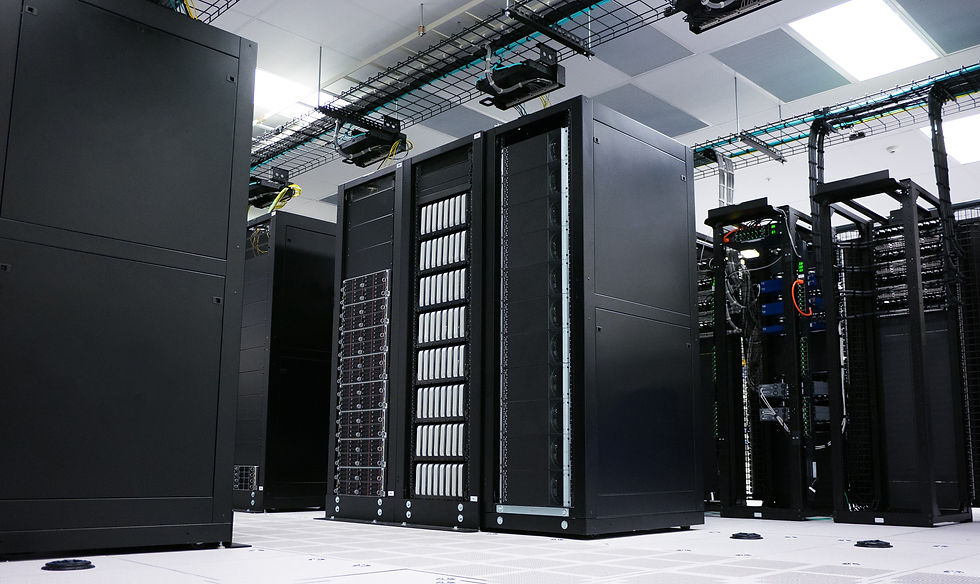Introduction
In modern technology, businesses constantly seek ways to improve efficiency, agility, and flexibility. One solution that has gained significant attention in recent years is hyper-converged infrastructure (HCI). HCI simplifies data centres by consolidating storage, computing, and networking into a single appliance, making it easier to manage and scale. If you're new to the concept of HCI, this beginner's guide will provide you with a solid understanding of what it is and why it is gaining popularity.

What is Hyperconverged Infrastructure?
Traditional IT infrastructures typically consist of separate components, such as servers, storage arrays, and networking equipment. Managing these components separately can be complex and time-consuming. Hyperconverged infrastructure takes a different approach by integrating these components into a single, highly efficient appliance.
At its core, HCI combines computing, storage, networking, and virtualization resources into a unified system. This consolidation eliminates the need for multiple management interfaces, simplifying operations and reducing costs. This all-in-one approach enables organizations to deploy new applications easily and quickly and scale their infrastructure as needed.
Benefits of Hyperconverged Infrastructure
Simplified Management: Managing various infrastructure components traditionally required expertise and time. With HCI, the entire infrastructure, including virtual machines, storage, and networking, is managed through a single interface. This reduces complexity and the need for specialized skills, freeing IT teams to focus on more strategic initiatives.
Improved Scalability: HCI allows organizations to scale their infrastructure quickly by adding additional nodes to the cluster. With traditional infrastructure, scaling often requires purchasing and integrating separate components, which can be costly and time-consuming. HCI simplifies this process, enabling businesses to scale rapidly and cost-effectively based on their needs.
Enhanced Performance: HCI's integrated architecture ensures all components work seamlessly together. This provides improved performance and eliminates bottlenecks in traditional infrastructure configurations. With HCI, businesses can achieve higher performance levels and reduce latency, resulting in better application responsiveness.
Cost Savings: By consolidating all infrastructure components into one appliance, HCI reduces hardware, power, and cooling costs. Additionally, HCI's simplified management and scalability result in fewer resources being dedicated to system administration. These cost savings make HCI an attractive option for businesses optimising their IT infrastructure.
Getting Started with Hyperconverged Infrastructure
To implement HCI, you must evaluate your business requirements, existing infrastructure, and budget. Here are some critical steps to consider:
Assess Your Needs: Identify your organization's IT requirements, including storage, computing, networking, and virtualization. Determine the scale and performance needed to meet your objectives.
Research HCI Solutions: Several HCI vendors have unique offerings in the market. Research and evaluate different solutions based on factors that matter most to your organization, such as ease of deployment, scalability, and integration capabilities.
Planning and Design: After selecting an HCI solution, carefully plan and design your infrastructure. Consider workload requirements, data protection, and disaster recovery strategies.
Implementation: Work closely with the HCI vendor or an implementation partner to install and configure the HCI solution. Ensure that all components are properly integrated and functioning as expected.
Testing and Optimization: After implementation, thoroughly test the infrastructure to ensure it meets performance and reliability expectations. Optimize settings and configurations as needed to achieve optimal system performance.
Ongoing Management and Support: Regularly monitor your HCI environment and promptly address performance or capacity issues. Stay updated with vendor releases and new features to ensure you leverage the latest enhancements.
Conclusion
Hyperconverged infrastructure has revolutionized the way businesses manage their IT infrastructure. With its simplified management, scalability, performance, and cost savings, HCI offers a compelling solution for organizations of all sizes. If you're considering implementing HCI, take the time to evaluate your needs, research different solutions, and plan your implementation thoroughly. With the right approach, HCI can help drive efficiency and agility within your organization, setting you on the path to future success.


Comments